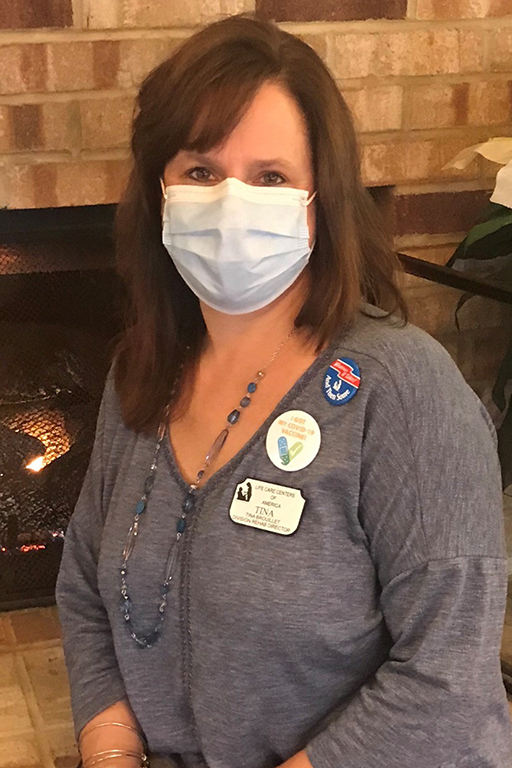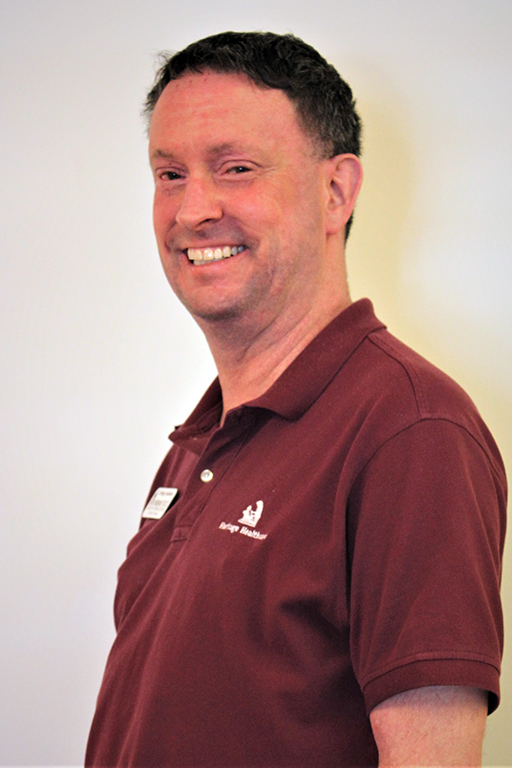
Life Care celebrates Occupational Therapy Month 2021
April is Occupational Therapy Month, and Life Care is blessed to have many wonderful and professional occupational therapists and certified occupational therapist assistants throughout our company.
In a skilled nursing setting, occupational therapy helps patients improve their activities of daily living, their daily self-care tasks that they do at home. These ADLs can range from the basic brushing teeth and getting dressed to cooking meals. OTs also help patients regain function to be able to participate in their favorite hobbies again.
This year, Life Care shines a spotlight on three of our outstanding occupational therapists.

Tina Brouillet, Division Rehab Director, Northeast Division
Tina has been an occupational therapist since 1993, but the spark for her career started as a Girl Scout.
Tina participated in the Adopt-a-Grandparent program her troop was doing, and while her friends in the group went to the nursing home to visit little old ladies, Tina found herself meeting a 35-year-old on a gurney.
“I was very, very passionate after that about helping people to live better,” Tina shared. “Occupational therapy is facilitating participation in everyday living. We teach purposeful activities that allow a person to reach their goals.”
Tina connected with Life Care in 2005, and she has been with the company ever since.
“Life Care has seen the value in what occupational therapy has to provide,” Tina said. “Our leaders understand that we should never stop growing.”
Over the years, Tina has valued being able to learn from key leaders in the industry and has earned her certification as a Functional Standards for Optimal Aging Expert. She is a Wound Treatment Associate and is certified in crisis care prevention for dementia patients and in LSVT BIG® therapy for Parkinson’s patients.
Currently, Tina’s reading revolves around wellness resources, and she enjoys supporting her therapists throughout the Northeast to continually be learning and growing and coming up with ways to better serve the patients.
“My goal is always to provide the best clinical resources,” Tina said. “Our staff come up with amazing ways to help our patients.”
Creativity is a key to occupational therapy, Tina shared.
“I had a little 87-year-old lady who every morning was dressed to the nines,” Tina said. “She wasn’t sleeping or eating well, and we found out she had been a Rockette. She used to start her day at 2 a.m. We devised an entire day around a 2 a.m. wakeup.”
The therapy team integrated the patient’s former career into her rehab as well and had her do kicks while steadied on a bar for balance. They improved her eating by serving her more of the foods she had long been accustomed to when she had to watch her figure.
It’s successes like these that drive home the importance of the field to Tina.
“We all get into OT because we want people to get better,” she said.
Tina’s advice to new occupational therapists and occupational therapy assistants is: “Understand the evidence-based practices and the resources available at your fingertips. In some cases, you are the most important person who can help that individual reach their goals. Never lose sight of what you are trying to achieve – and recalculate often.”

Suchitra (Suchi) Iyer, Regional Rehab Director for Golden State Region
Suchi oversees rehabilitation efforts for Life Care’s facilities in California, and, like Tina, she enjoys being able to work with the therapists in her geographical area.
“I love being a resource and an educator,” Suchi said. “I am able to touch so many people’s lives.”
Suchi has been an occupational therapist for 15 years. She started her career with Life Care at Lake Forest Nursing Center in Lake Forest, California.
“I didn’t choose the profession – it pulled me toward it,” Suchi said of working in skilled nursing facilities. “I love interacting with the elderly. Being able to help them get back their quality of life was very appealing to me.”
When Suchi started out, what surprised her most was how much we take for granted all the little things we are able to do physically. She has enjoyed being able to help patients rebuild those basic skills. And she enjoys the strategy that takes.
“I love that OTs can be very creative,” Suchi said. “We’re not confined to a certain role. You can overlap with so many professions and still have your own occupational therapy identity.”
Suchi has presented at OT symposiums five times, covering topics ranging from fall reduction, spirituality in occupational therapy, navigating cultural influences in practice and quality measures in OT.
Most recently, Suchi has been reading “The Power of Letting Go: How to Drop Everything that’s Holding You Back” by John Purkiss. It’s a book she said is helping her both at work and in her personal life, especially after this past pandemic year.
Suchi found herself assisting with patient care during the past year and remembers one patient in particular who simply wanted her to stay with her for a little while and hold her hand.
“COVID has made me realize that you have to live in the moment,” Suchi shared. “It has taught me to appreciate what I have.”
Suchi’s advice to new OTs and COTAs is, “Never lose your passion, because it’s not a job – it’s a calling.”

Keith Screen, Director of Rehab Services at Heritage Healthcare in West Lafayette, Indiana
Keith has been an occupational therapist for more than 25 years and has spent all of his OT career in skilled nursing rehabilitation as well.
“I always wanted to work with geriatrics,” Keith shared. “They were my favorite. The fact that I could help patients improve their independence sounded kind of amazing.”
Keith has seen how the value placed on rehabilitation has grown since he started in 1995. More people understand now that it is possible to help many of the individuals in a nursing home setting regain function and improve their quality of life.
When Keith started out, he was surprised at how much physical energy being an OT can take.
“You’re doing exercise with your patients all day long,” he said, pointing out that includes not only exercise routines the therapist is teaching the patient, but also things like helping to support their weight while they practice their activities of daily living.
Keith has been at Heritage Healthcare for 13 years, and he is glad to call this community his home and his teammates his family. Since the facility takes a lot of patients with behavioral issues, the center has also provided him with many chances to advance his training in the field.
“We do some special stuff here,” Keith shared. “We believe in the power of crafts and very purposeful activities.”
For example, Keith remembers one young patient who was an amputee and used to refinish furniture.
“I would bring in sandpaper, and I’d put up a table outside, and we sanded the table as part of her therapy,” Keith shared.
A little while after beginning this therapy approach, his executive director and director of nursing asked Keith what he was doing because the patient’s negative behaviors had completely turned around, and she was balancing better as well.
“We were able to send her home,” Keith said. “It was making a connection with the patient that made a difference, finding out what’s important to them and using it to make their lives better.”
Keith has a geriatrics stamp from the National Board of Certification in Occupational Therapy and is a certified lymphedema therapist. He loves to see how much patients’ lives improve when lymphedema swelling resolves.
“It’s pretty shocking how much you can make a difference in somebody’s life in just a couple of weeks,” he said.
For his reading, Keith has been enjoying the fantasy novel “The Name of All Things” by Jenn Lyons.
Keith’s advice to new occupational therapists is this: “Congratulations, you’ve chosen one of the best jobs in the world. Hang in there – you’re on a crazy ride, but you’ll be glad you’ve chosen this profession.”

